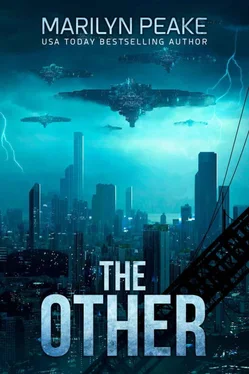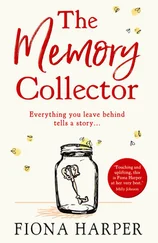Roswell, New Mexico—Early 2000s appeared in front of my eyes. The land of the famous UFO Incident. At least it wasn’t the year 1947. I didn’t want to be the green-skinned human mistaken for an alien and dissected for science. That was not what I had in mind when I decided to become a time traveler.
Dr. Molyneux threw her long blue hair over her shoulders. Folding her hands and smiling, she said, “Good luck with your studies. You’re about to embark on the most important missions we’ve conducted in a long time.”
Waylon Quill was my assigned time travel partner. We participated in quite a few bonding exercises before takeoff. He was a good match. We got along well and our skill sets were complementary. We were both Medical; but he was History while I was Anthropology division.
We arrived at the launch pad wearing the tight green suit and helmet that would monitor our bodies’ systems and send the information back to TTA. They would bring us back if we ran into problems where both of us could no longer work the controls.
We strapped ourselves into our seats, did a preflight check, and drank a vial of the blue potion that would help us deal with acceleration beyond the speed of light and movement through the curved fabric of space-time. All our missions before this involved infinitesimal space-time distances compared to this one.
I napped while the computers and robots spoke to our pod, making sure that all the systems were in working order.
Finally, the countdown began. 60… 59… 58… 57… All the way down to 1 while the chatter continued between machines and vehicle.
Then the words: Cleared for launch!
The pod accelerated faster and faster, eventually moving beyond the speed of light. As it broke the light barrier, a display similar to the Aurora Borealis surrounded our vehicle. Our pod became a metal fish swimming through liquid rainbow. I knew that back on Earth, observers would witness a ball of light bursting out of the sky much like an exploding sun.
The experience of accelerating beyond the speed of light is difficult to describe. I felt nauseous and developed an intense headache. That part’s easy to report. But my mind flooded with strange thoughts and languages, bits of events and conversations happening all around us in the space-time fabric as we sped through it. No doubt our empathic radar was working like an antenna, trying to acclimate us to points in space-time that we were only hurtling past.
When we landed, the screen attached to the pod hull relayed 360-degree views of our surroundings. We were relieved that we’d landed in the exact place we had planned: an empty field in the middle of a forest next to the birthing center for the mothers bringing the first generation of green people into the world.
A chill went up my spine. We were actually here, at that moment in time that had radically changed the appearance of the human race and improved our ability to survive on an increasingly hostile planet.
The pod had lots of room. It held several bedrooms and a kitchen, a library and a medical unit. The medical unit included two surgery bays. The pods had been designed for extended stays.
We spent two days resting, drinking potions, and allowing our bodies and minds to adjust to our new location.
As soon as we’d recovered from the flight, it was time to accomplish our mission.
We put on the medical protective suits meant to disguise us. When those first babies were born, no one knew for sure if bacteria and other natural pathogens we all have inside us might mutate along with the babies’ genes, so medical personnel wore the same kinds of hazmat suits used in the care of patients with highly contagious, deadly diseases such as Ebola.
Waylon and I painted our faces and hands with tan pigment that bonded with our skin to such a degree, we’d need to use special fluid to take it off. Then we put on the hazmat jumpsuit, apron, boots, gloves and hood. Since we couldn’t wear our usual large black neural-connective lenses over our eyes because they hadn’t been invented in that time period yet, a similar type of screen was built into clear plastic goggles that were sometimes worn over the hoods. We were warned not to leave them behind, as ours had modern technology built in. Information displayed on the goggles would only be visible to the person wearing them, not to anyone else observing them. We didn’t have to do anything to disguise our eyes. All modern people had green or blue eyes and those were common back in the time we were visiting.
We strapped on our goggles; then walked the short distance to the birthing center, making sure no one saw us step out of the woods. The outfits were cumbersome. We knew if anyone saw us, we’d be in trouble. At the hospital, these outfits were supposed to be kept as close to sterile as possible. They weren’t allowed to be worn for a hike through the forest and across the grounds. We knew from the history books, however, that no bacteria mutated within the babies in any kind of dangerous way. We had special spray we’d use on the bottom of our boots when we got inside the hospital. Otherwise, we posed no danger to the moms or babies.
We knew exactly where we were supposed to go. We followed the maps etched across our goggles to the room where Baby #24 was being born. Mother’s name: Natalie Jenkins. Room #: 459.
Entering the building through a back door, we walked through empty hallways until we reached the main part of the hospital. Then we took an elevator up to the Maternity Ward on the fourth floor. When we entered the elevator, we were alone. Just as I was about to press the button labeled 4 to ascend, three nurses entered the enclosed space. One greeted us by saying, “Hello. How are you?” We just nodded our heads as we’d been instructed to do. Don’t speak unless you absolutely need to, except in regard to your pregnant woman once you get into the delivery room.
I blinked my eyes to have my pulse rate appear across the inside screen of my goggles. As it climbed, I worked to control it. Breathe, breathe. Calm yourself. Remember what the pulse rate medicine did to my body, how it felt. Try to repeat the effect.
I worried for nothing. The nurses didn’t care about us. They had more important things to discuss about their patients and their personal lives. After talking briefly about a patient who had delivered a set of twins at 4:00 AM, they discussed where to go out to dinner before going on night shift.
When the elevator stopped on the third floor, they got out.
I sighed with relief. I quickly pressed the 4 button, before anyone else had a chance to get on.
The next Ping! let us know we’d reached our destination. The doors whooshed open, and we stepped out into our biggest challenge so far.
There were a lot of doctors, nurses and visitors walking around the maternity floor and sitting behind the main desk. Thankfully, there were quite a few wearing personal protective suits. I figured we’d blend in just fine.
We found Room #459 and peeked through the glass window. There was an obstetrician dressed in less protective clothing than us, as it would be very difficult to deliver a child while wearing that cumbersome an outfit. However, there were also two nurses dressed exactly like us.
We knew from our records that the pregnant woman would have complications in about five minutes, breech birth, so the staff would become too busy to pay much attention to exactly who we were.
Waylon pushed the door open. He said, “We were sent here to assist.”
Dr. Owen Reynolds said, “Hello. We’re getting close to delivery here.” He smiled at the woman laboring in the bed, her long brown hair spread across the pillow. Beads of sweat dotted her forehead. Her hands clenched the bedrails. She was moaning and seemingly oblivious to everyone in the room. Her thoughts had turned inward, focusing on her contractions and pain and the new life she was bringing into the world.
Читать дальше












